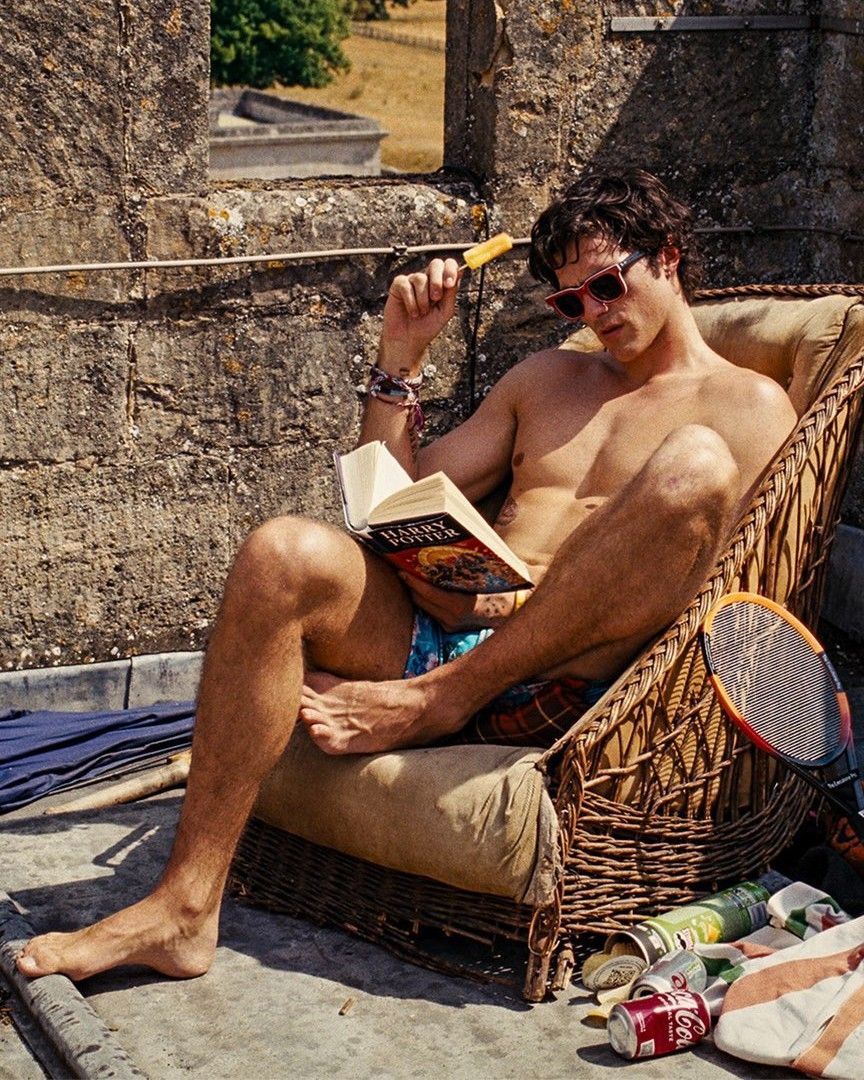
Welcome to the age of the thirst trap When man discovers himself as the object of desire
In the beginning, there was Mark Wahlberg for Calvin Klein. It was 1992, and Herb Ritts' photos featured not the typical catalog model but a streetwise lad in boxer shorts, a mischievous grin on his face, and a robust, exuberantly healthy physique that every man desired. While gym culture had already become widespread in the '80s, Marky Mark's billboard debut marked a turning point: even an ordinary guy from Boston, albeit with a slightly unrefined air, could become an object of desire, authentically raw and boldly erotic. Until the advent of social media (let's not even get started on OnlyFans), such images were not only less readily available but also less frequently self-produced. Just a decade ago, a man spending time photographing his physique would have been seen as, at the very least, unconventional. Growing up in the early 2000s, male teenagers were into sports, but the idea of having a sculpted body for alluring photos was quite alien to the common mindset. Today, things have changed: in the era of dating apps and Instagram followers, not only do you need photos to present yourself to the world, but you must also showcase yourself as desirable individuals. Models, influencers, and even regular people have created an entire communication style based on displaying, more or less suggestively, their own bodies. It's the era of the thirst trap.
Bad Bunny shares new nude photo. pic.twitter.com/8l2WZR7bKx
— Pop Tingz (@ThePopTingz) August 27, 2023
Amid the explosion of social media and the redefinition of masculinity, male self-representation in 2023 has undoubtedly become more erotic. Now, scrolling through any Instagram feed, you'll notice that the vast majority of these shirtless, swimwear, or underwear photos aren't inherently erotic; they're 'candid' shots displaying workout results, training moments, vacation or beach photos, and maybe even selfies taken at home. Nevertheless, as innocent as they may seem, all photos that expose and exhibit a naked body aim to some extent at capturing attention and desire. Think of Bad Bunny's nude mirror selfie, where a slight contrast adjustment brought out very intimate physical details from the shadows. Or consider Gianluca Conte, known as @itsqcp, famous for his cooking videos; while his culinary content is indeed nice and engaging, it's impossible to ignore that he's shirtless under his apron – which incidentally is available in his e-shop. It's logical to wonder if this small but crucial detail has contributed to his profile reaching nearly two million followers. Model and creator Vinnie Hacker, with over five million followers and numerous fan pages where clothes are scarce and fire emojis abound, has turned the thirst trap into a vehicle for securing fashion campaigns, launching merch, and becoming a widely recognized personality. Another American creator, Evan Lamicella, transitioned from sporadically posting images of his physique to becoming a full-fledged thirst trap, launching an athletic apparel brand and a thriving OnlyFans profile.
But what happens when we move from professional models to 'private' individuals who want to try their hand at being creators in a broad sense or simply cultivate a personal profile? This summer, a relatively well-known young Milanese creator, whom we won't name, posted a thirst trap photo in his IG Stories. The responses he received in his DMs quickly shifted from simple compliments to aggressive and unsolicited advances, sometimes even explicitly obscene. Consequently, the creator felt compelled to post a story right after, clarifying both his sexual orientation for his followers, making it clear he didn't want indecent propositions from men, and protesting against the intense sexualization he had become a target of. This case illustrates the contradiction in those 'social media models' who have no qualms about tantalizing their audience's appetites by posting thirst traps, which greatly benefit their social metrics, yet appear surprised by the sexual nature of those very appetites. We're not saying this to excuse or justify the obscene comments directed at him, which are always wrong when unsolicited, but to highlight the fact that in their more innocent form, thirst trap creators seem blissfully unaware of why their audience follows them in the first place. More often than not, it's not about their personality.
There are too many queer coded straight guys these days
— hack harlow (@BriceCollin) September 27, 2022
But things get even murkier when the images in question are queer-coded. Over the years, queer iconography has intensely focused on the exploration and exhibition of the male body, evolving around often fetishistic archetypes that revolve around specific anatomical parts or poses, which have become visual tropes (or rather, clichés) through which the queer community represents and celebrates its own sexuality. These visuals also send signals of recognition by which community members could identify themselves in a mostly implicit manner through social media. It's no secret that gay culture cultivates physical and aesthetic standards that some would call 'restrictive,' while others refer to them as 'toxic.' Unconsciously, however, thirst trap creators have begun, sometimes innocently and sometimes entirely mischievously, to borrow from the queer-style photography these visual solutions in the form of close-ups, seemingly innocent framings, and specific poses that appear tailor-made for queer audiences, who often constitute a significant portion of the following of these attractive twenty-somethings, whose orientations, in many cases, don't align with that segment of the audience.
@notmr.bigchops69 #duet with @janis.danner Originalton - Janis_danner
Without delving into excessive speculation, however, the vast majority of men posting thirst traps will have a clear goal in mind: to showcase their attractiveness, harvesting likes and social validation while advertising themselves in seemingly innocent contexts but with a clear, implicit sexual undertone. The method certainly works, but it works too well, tainting the parasocial relationships that many users have with creators or private users with an erotic attraction that can be expressed through the classic fire emojis but often leads nowhere, potentially giving rise to inappropriate behaviors. The intensity of these parasocial relationships can sometimes result in openly obscene attitudes and reactions – a surge of repressed desire that many young creators gleefully ride, often shielded by apparent innocence and naivety. Nonetheless, the celebration of physicality has made partial or complete nudity an absolute positive value and, in essence, has turned the body into a kind of commodity to be displayed in the shop window to attract the audience, becoming the metric by which observers measure the confidence of the observed, who, in turn, gauges their own desirability reflected in likes and reactions. The fact that no one is willing to admit the fundamental erotic nature of this content perhaps demonstrates how, even at the height of the era of body positivity, traditional beauty remains an essential social currency. Just don't say it out loud.














































